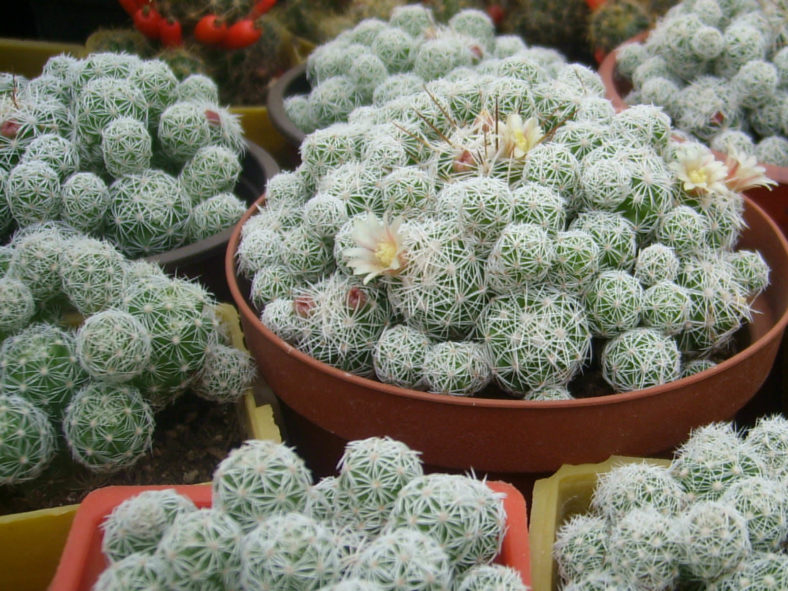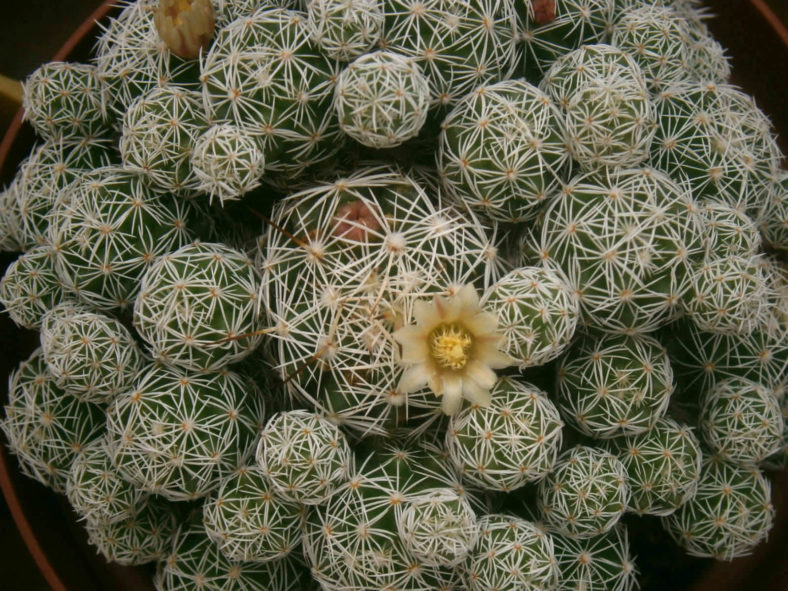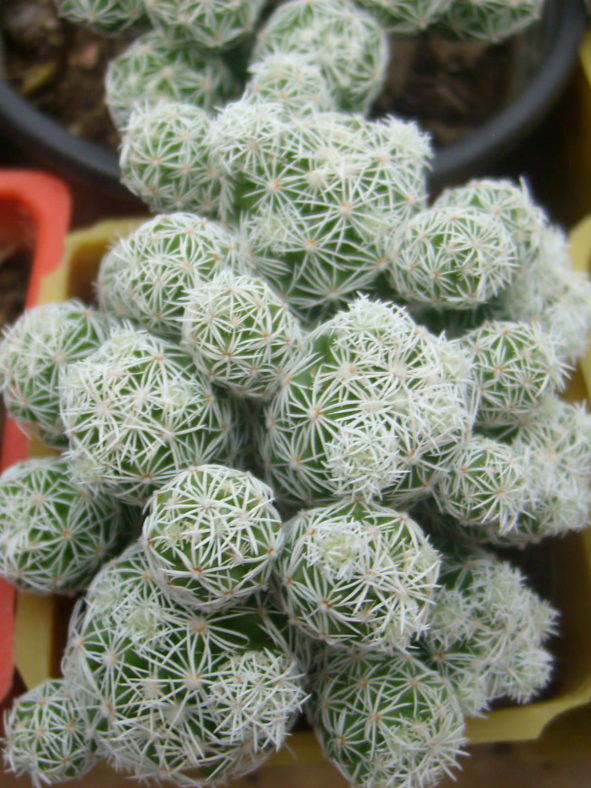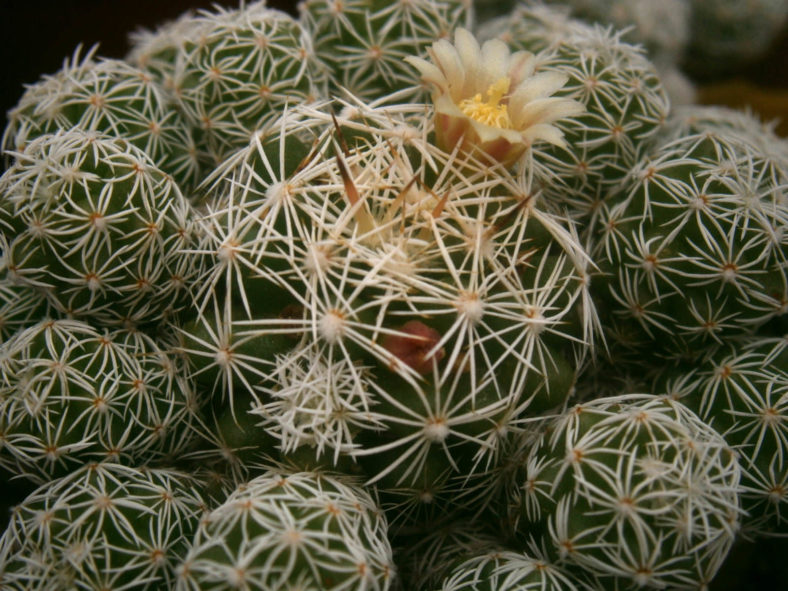Scientific Name
Mammillaria vetula subsp. gracilis (Pfeiff.) D. R. Hunt
Common Name(s)
Thimble Cactus, Thimble Mammillaria
Synonym(s)
Cactus gracilis, Escobariopsis gracilis, Krainzia gracilis, Mammillaria gracilis
Scientific Classification
Family: Cactaceae
Subfamily: Cactoideae
Tribe: Cacteae
Subtribe: Cactinae
Genus: Mammillaria
Etymology
The subspecific epithet "gracilis" (pronounced "GRASS-il-is") means "slender, slim, thin; meager, scanty, lean; (of style) unadorned, simple" and probably refers to the stems of this species that are more slender compared to the type subspecies Mammillaria vetula subsp. vetula.
Origin
Mammillaria vetula subsp. gracilis is native to Mexico (Hidalgo, Queretaro).
Description
Mammillaria vetula subsp. gracilis, also known as Mammillaria gracilis, is a small cactus with cylindrical, bright green stems densely covered with white spines. It offsets freely and forms large clumps over time. The stems can grow up to 5.2 inches (13 cm) long and 1.2 inches (3 cm) in diameter. They fall off easily but readily re-root. All spines are usually radial, but occasionally there are 1 to 5 longer, dark-brown central spines.
The flowers are creamy to pale yellow, with a pinkish or brownish mid-stripe on the petals, and typically appear in spring, but may also occur in late summer and fall. They can reach a length of 0.6 inches (1.5 cm) and a diameter of 0.5 inches (1.3 cm).

Cultivars of Mammillaria vetula subsp. gracilis
Mammillaria vetula subsp. gracilis 'Arizona Snowcap'
How to Grow and Care for Mammillaria vetula subsp. gracilis
Hardiness: USDA hardiness zones 9a to 11b: from 20°F (6.7°C) to 50°F (10°C).
To encourage better flowering, allow the plants a cooling period in winter and suspend watering. Unlike many other cacti, which use their ribs as storage devices, Mammillaria features raised tubercles, from which spines emerge. When you water, the tubercles expand to increase water storage. The flowers appear from the axils of these tubercles on the previous year's growth, which accounts for their interesting halo effect. The cactus mustn't be exposed to prolonged dampness and standing water. Never let your cactus sit in a dish of water. Lastly, fertilize during the growing season for the best results.
Repot as needed, preferably during the warm season. To repot Mammillaria, ensure the soil is dry before repotting, then gently remove the pot. Knock away the old soil from the roots, removing any rotted or dead roots. Treat any cuts with a fungicide. Place the plant in its new pot and backfill it with potting soil, spreading the roots as you repot. Leave the plant dry for a week or so, then begin to water lightly to reduce the risk of root rot.
See more at How to Grow and Care for Mammillaria.
Links
- Back to genus Mammillaria
- Succupedia: Browse succulents by Scientific Name, Common Name, Genus, Family, USDA Hardiness Zone, Origin, or cacti by Genus
Photo Gallery
Click on a photo to see a larger version.


